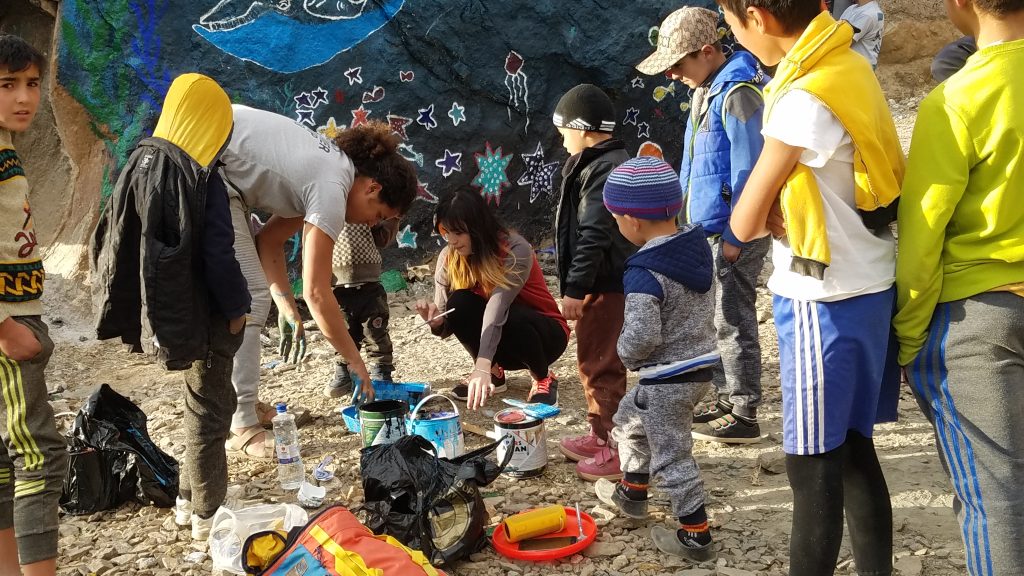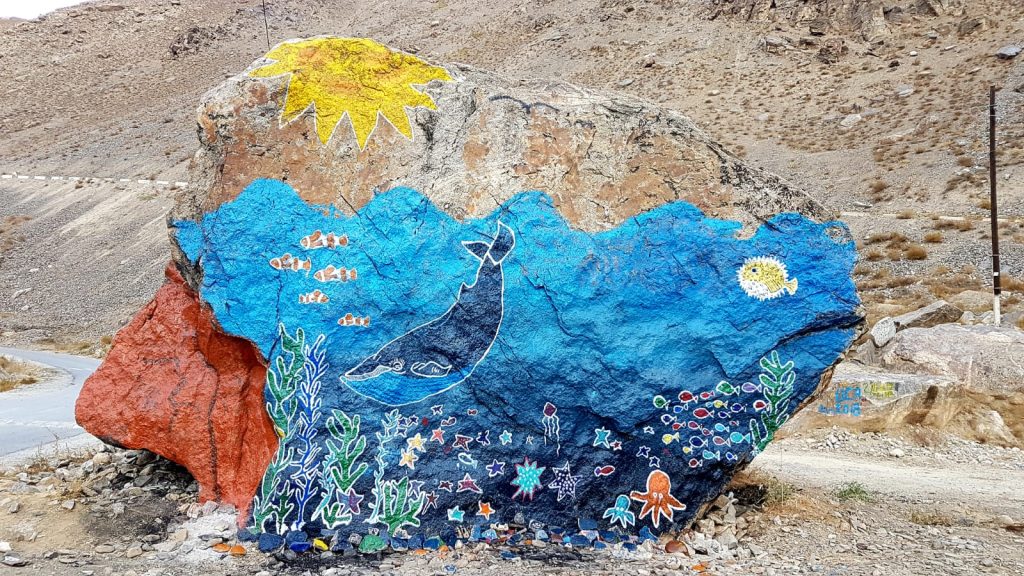35 Bringing Communities Together Through Art Projects
Art binds. Culture generates social capital and strengthens a community’s character. Art brings people together physically—at galleries, museums, performance spaces—and culturally, through its capacity to tell a community’s shared story, to inspire reflection, and form connections that transcend differences.
how-the-arts-bring-communities together
Humans are naturally creative and when they are using their hands, their minds relax and they often enter a flow state of being. When people work together on artistic projects, the experience can create new bonds and a shared pride as something mysterious emerges from a swirling together of different minds, hearts and visions.
Here are four case studies where group art projects were used to build community cohesion.
Case Study #1: Community Services Table Project, Salmo, British Columbia, Canada
In 2008, there was a dynamic women’s circle meeting regularly at Salmo Community Services. One of the projects that spun out from the women’s group was an initiative to paint the ugly plywood tables that were used in the meeting room. A few people painted the four tables a base green and then over the next week, around 30 people of all ages dropped by to add artwork to the tables. Sometimes we would see teens and children and senior citizens all chatting together as they painted their corner of a table. Counsellors would drop by after their appointments and pick up a paint brush and join the artists. The final product was a vibrant testament to inclusion and is still brightening the community room sixteen years later.
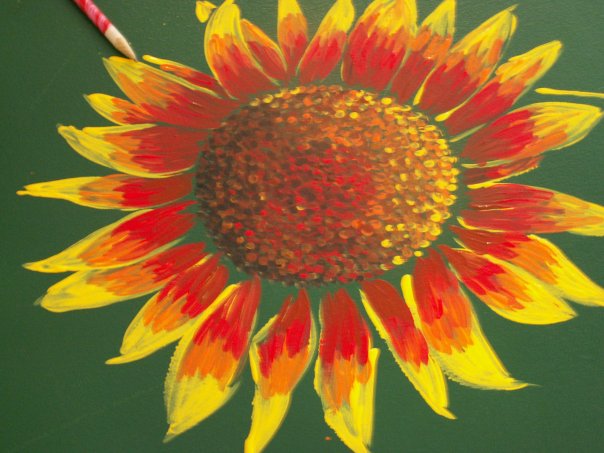
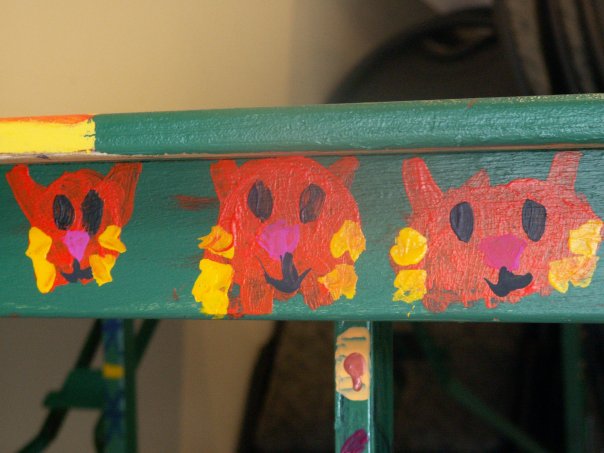
Key Takeaways from Community Services Table Project
- Everyone is more than their problems and group art projects allow people’s creative gifts to shine.
- Sometimes therapeutic conversations happen outside the counselling office when people are relaxed, creating together and sharing stories.
- Alfred Adler said everyone needs to feel Connected, Capable and Contributing. Community art projects have the capacity to create a sense of support, competence and belonging.
Case Study #2: Rock-On Art Project in Khorog, Tajikistan
The University of Central Asia Khorog campus in Tajikistan is right next to the small village of Dasht. The UCA Student Life department and student leaders initiated a community art project in order to get to know the village residents better and collaborate with them to create something fun and beautiful in their neighbourhood. Tajikistan is a doubly land locked country where most citizens will never see the ocean, so students thought it would be fun to bring the sea to the rocky hillside of Dasht. The project was planned during the University fall break and all week the university students and village children gathered to paint ocean life. Over that week the youth also had a chance to practice English with staff and students from Austria, Afghanistan, Pakistan and Canada and our local Pamiri students translated conversations into Shugni and Tajik. As people painted, barriers dissolved and often elders and parents would be sitting nearby drinking tea, chatting and enjoying seeing the project unfold.
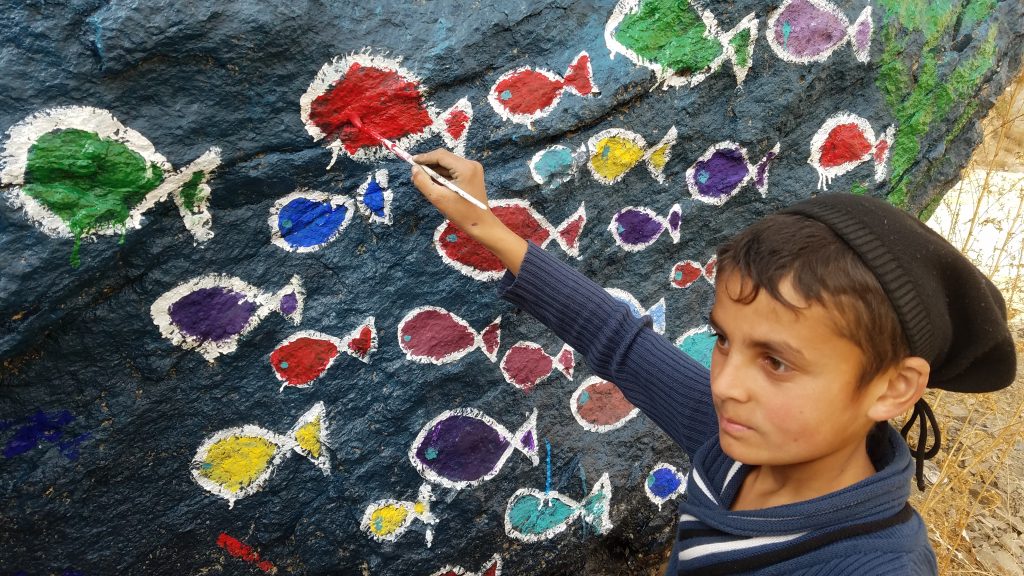
Case Study #3: Rocks of Kindness
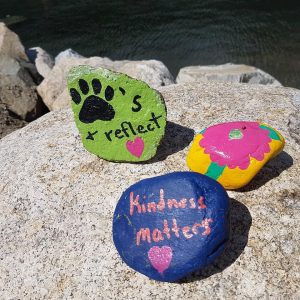 When students first arrived on the new University of Central Asia campus in Tajikistan, the Student Life team developed many different activities to help the new students get to know each other, the faculty, staff and the local community. One activity was painting rocks and then hiding them around the campus and community so that random people receive a surprise gift.
When students first arrived on the new University of Central Asia campus in Tajikistan, the Student Life team developed many different activities to help the new students get to know each other, the faculty, staff and the local community. One activity was painting rocks and then hiding them around the campus and community so that random people receive a surprise gift.
Similarly, during the covid pandemic, families and children in the small Canadian town of Nelson were in lock down and home-schooling parents were looking for activities for their kids. Masked community members out walking, would find these small colourful reminders of wisdom and fun.
Materials and Resources
- Facilitators and volunteers need to find a variety of smooth rocks and paint or spray paint some bright base colours.
- Acrylic paints, brushes, decorative glitter and marker pens.
- Volunteers to display or hide the rocks throughout the community.
Case Study #4: Wellbeing and Gratitude Trees
The student health council at the University of Central Asia organized a community health fair in Naryn, Kyrgyzstan. While parents and grandparents were going to different stations to measure their blood pressure and learn about nutrition and mental health, the youth and children created a tree with messages about things they do to stay healthy.
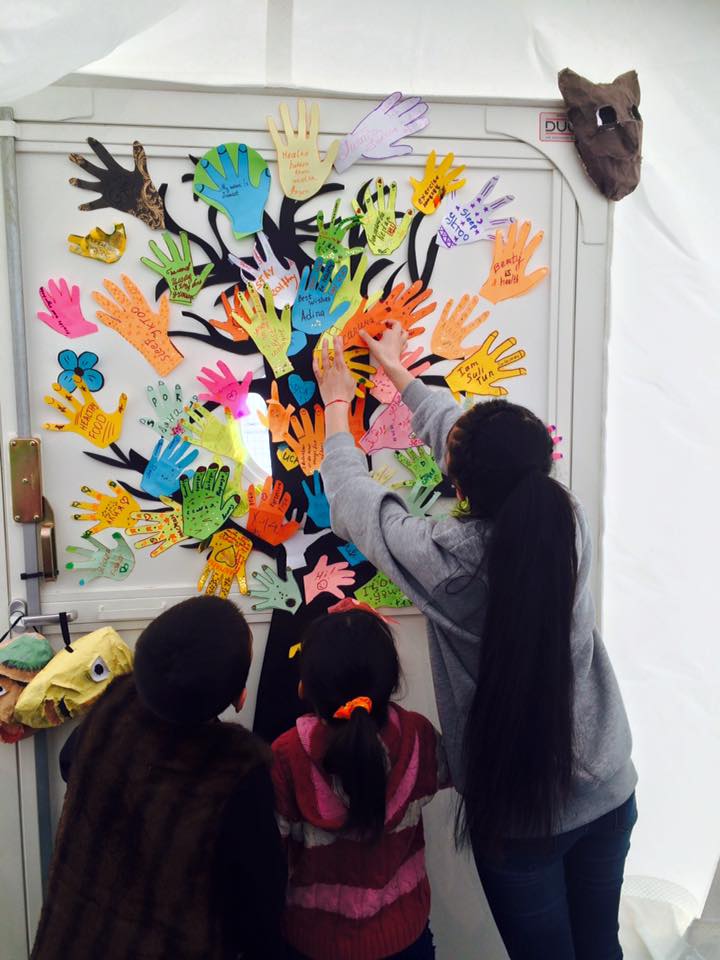
While children traced their hands and cut them out, the university student volunteers were chatting with them about hygiene, health and happiness. They helped them to write their messages in Kyrgyz, Russian or English on their paper handprints and then they all collaborated to tape the leaves to the tree outline taped to the wall. The tree provided vibrant decoration to the event and encouraged conversation and connection.
Another spin on the tree art project is the group creation of gratitude trees. In this example, leaves were cut out ahead of time and were placed on a table with pens. People passing by wrote their gratitude messages on a leaf taped them onto the tree.
